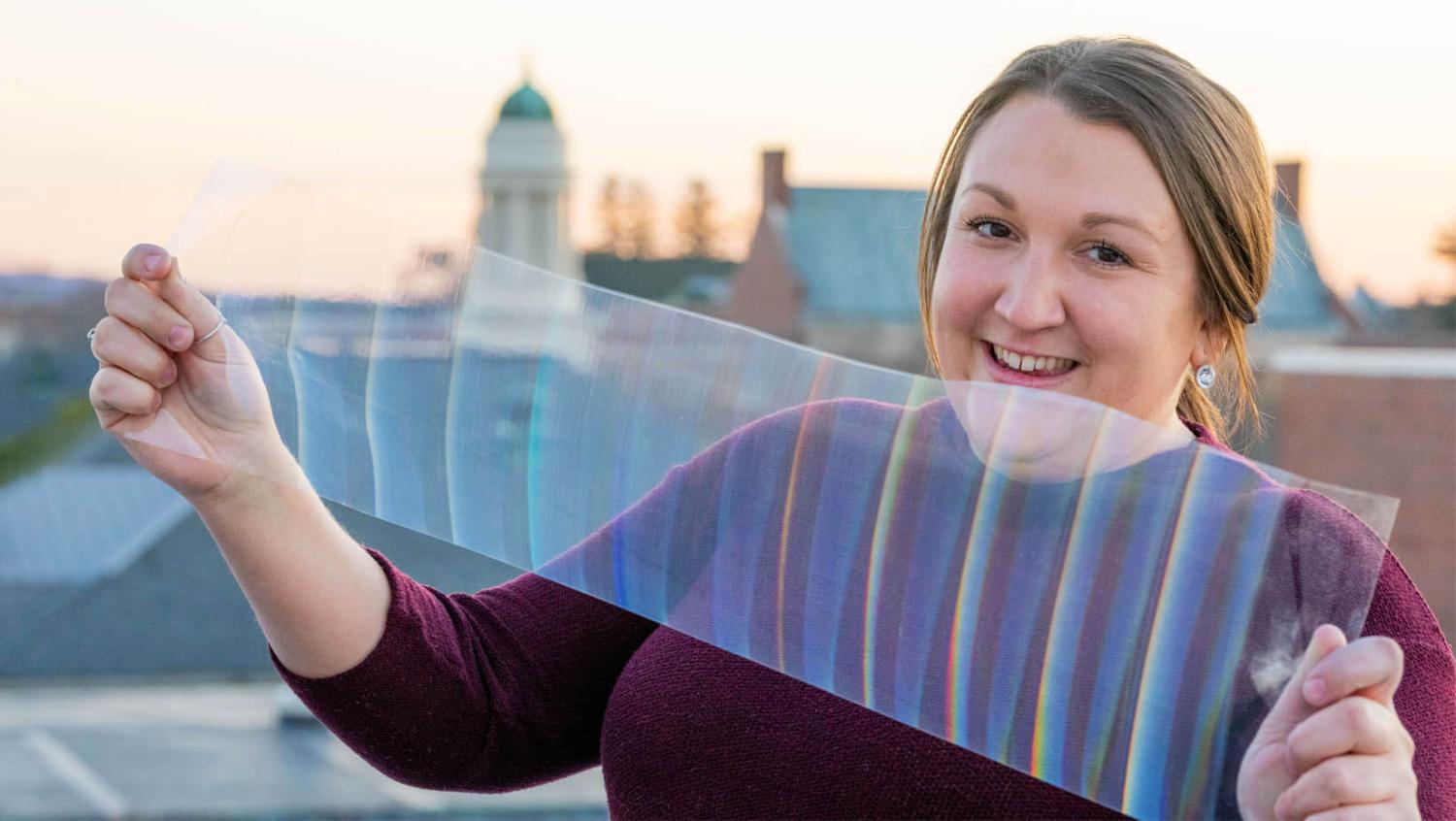
Finding Innovative Uses for Paper Products: Liza White
Liza White thought she was going to become a doctor. Born and raised in Rumford, White always loved science and math.
But when she arrived at the University of Maine, Orono in 2017, White quickly discovered that her interests were a better fit for something other than medicine: sustainable biomedical engineering, a field that has been increasingly used to create innovative solutions to climate change.
White quickly found an opportunity in undergraduate research, where she was able to get hands-on experience in microfluidics: the study of liquids on a microscopic scale. Now, a third-year PhD student at the University of Maine, White studies how paper products can be used in new, inventive ways.
White is currently collaborating with Sappi North America, which owns and operates two paper mills in Maine. Using the skills she gained in her undergraduate research, White studies novel uses for paper products manufactured by Sappi’s Westbrook plant, which produces textures that are used in products like fabrics for handbags, shoes, and furniture. She wants to know if these textures could be used to produce a low-cost, paper-based device for water quality testing. Specifically, White is testing a textured rainbow film.
“I like to say that a big part of my job is looking at rainbows, and seeing how they change.”
Water quality testing is currently done using plastic and silicone-based film. White’s option would be more environmentally friendly – and it would enable municipalities to test their water in-house, instead of sending samples to a lab, saving time and money.
The film White is testing can diffract light into an array of colors – she’s using this to test how contaminated water interacts with the film. For example, how might different chemicals change the intensity of the colors? If the film works as hypothesized, you would be able to determine what kinds of pollutants, and their quantity, from examining the film after testing.
The long-term goal is to integrate the film with sensors and machine learning to detect pollutants in lakes, rivers, and wastewater. These sensors would allow for the faster detection of contamination events, track pollutants, and increase access to clean drinking water.
After seeing the economic impact of mill closures in Maine, including in her hometown in Rumford, White has a unique understanding of how vital these heritage industries are to communities. This first-hand experience drives White’s passion for her research. “I love that I’m able to find alternative uses for what Maine paper industries already do really well.”
Throughout her work, White has always valued outreach and education. “As a first-generation college student, I had no idea what was available to me; or that getting a graduate degree was even possible.” Most recently, White spoke to Rumford Middle School students about STEM careers. “I want to show lower-income communities that it’s possible.”
After graduating in 2025, White hopes to continue creating connections between sustainability, research, and industry. Her advice to students interested in pursuing sustainable biomedical research?
“Nothing is linear. Change is inevitable. Say yes to everything and see what works for you.”
(photo credit: University of Maine)